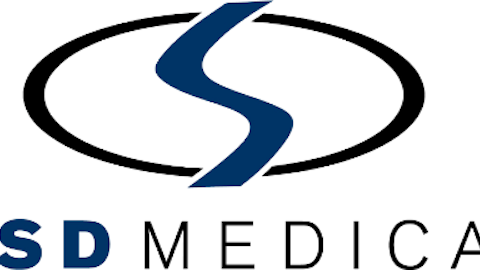James Whitney, Senior Vice President and Chief Financial Officer
All of the accounts have been moved over to the program and it’s been very well received by both our customers and our employees.
Joe Gomes, Wm Smith & Co
Okay. And then, just trying to run – given the volatility we’ve seen here recently in the economy, just wondering, you know, if you are seeing any impact here more recently on the business?
Ron Kochman, President and Chief Executive Officer
Joe, we don’t talk about current financial performance and what we see in trends until we publish our results but we’re doing okay. We’re pretty steady in our business.
Joe Gomes, Wm Smith & Co
Okay. And last question here – you know, just would reiterate, I know we’ve talked about this before about trying to get out a little bit more into the analyst and investment community and maybe doing a road show or an analyst day. You know, I think, that would help even get the word out about the company even more. Thank you.
Ron Kochman, President and Chief Executive Officer
Joe I agree with you and we’re actually planning on taking a trip in a few weeks. We will be right on the road. Thank you very much Joe.
Operator
The next question comes from Matt Sherwood with Cooper Creek Partners. Please go ahead.
Matt Sherwood, Cooper Creek Partners
Hi Guys. Congrats on a good quarter in the staffing segment. Just wanted to start, so, if you look at the cash-flow statement, it looks like if you back out the remediation cost and you take cash-flow from ops from continuing operations and subtract investment cash-flow. So, you come up with like $41 million of free cash-flow for the year, some of which is admittedly working capital. Waiting now, I guess, with your credit facility you have, you know, $5 million availability for a buyback. If you guys generate another similar year of cash flow, what’s the plan with the other $35 million? It’s just like a buck $50 a share.
James Whitney, Senior Vice President and Chief Financial Officer
Yeah, that’s a great question. I would say, as I pointed out, that $5 million restriction expires in March, so, I wouldn’t necessarily think that we would restrict share repurchases to just $5 million for the year. The Board has authorized 1.5 million shares – I think the intention is that as long as there is a continued belief that the shares are below the price and they are undervalue, that we should continue share repurchasing. So, probably the amount that we would commit to that is probably north of $5 million. So, we’ll sort of see how that develops during the year.
Beyond that, you know, we don’t – we think that having the borrowings, we have a very good interest on the borrowings. We think that it’s in shareholder’s interest to continue financing receivables through debt. So, we don’t see using the cash flow to pay down debt. So, therefore it’s available for other purposes as we think about reinvesting in the business. That and share buybacks are really the two areas of focus that we see going through the next year.
Matt Sherwood, Cooper Creek Partners
Then, I guess – just looking at the current quarter’s operating income: you guys did a 3.6% operating margin in Q-4 – that’s seasonally strong quarter. But, I guess, is there any way to sort of let us know where you are on annual run rate basis. It’s a little – given how weak Q-1 was, this year, it’s a little hard to sort of get a feel for where you are on that trajectory towards about 4% operating margins?
Ron Kochman, President and Chief Executive Officer
You know, that’s a great question Matt and going back to Joe’s question a minute ago about getting out to investors – one of the things we’re going to try – not try – one of the things we are going to do is put out an investor deck where we try to give little more insight into the business. Look, Q-1 is always a little quarter. Q-1 will not have a margin or anything like Q-4. It won’t be that in any year and that has to do with as you know a lot of the fundamentals about what our cost structure looks like and how that tales off always in the later part of the year due to taxes and so forth – employment taxes. So, what we’re looking at is trying to help people understand. You know, give it a little more information to understand how those quarters sort of typically would stack up so that you can kind of see where we sort of measure against, just, sort of, let’s call it, the typical trend line. So we’ll put out some information so that all investors can get a better vision on that or better visibility on that.





